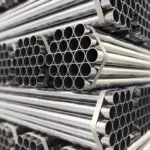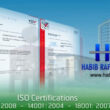In modern construction, where precision and efficiency are critical, a variety of additives and materials have emerged to improve the performance and ease of concrete. One of these key ingredients is water reducing agents, which are superior admixtures that play a key role in shaping the performance and properties of concrete mixtures. In this comprehensive article, we delve into the world of water-reducing admixtures to reveal their significance, function, types, and the tremendous benefits they bring to construction projects.

What is a water reducing agent?
A water reducing agent is a chemical additive added to concrete or mortar as a technical measure to reduce the amount of cement used and to improve the plasticity and fluidity of concrete. Water reducing agent can reduce the viscosity and internal friction of concrete by improving the interaction between water and cement particles and reducing the surface tension of cement and the adsorption force between particles after adding a certain dose.
The main function of water reducing agent is to change the amount and distribution of water in concrete to make it easier to process and construct. It can increase the fluidity of concrete, improve the construction performance, make the concrete easier to flow and fill in the formwork, and reduce the generation of air holes.
The addition of water reducing agent helps to reduce the water-cement ratio of concrete, i.e. the ratio of water to cement mass, thus reducing the moisture content and improving the mechanical properties and durability of concrete. It also improves the working properties of concrete, such as reducing viscosity, prolonging plasticity retention time, and reducing setting time.
Also Read: Concrete Mix Ratio Calculator – Concrete Mix Calculator
The main function of water reducing agent?
Water reducing agents play an important role in construction materials, not only can improve the plasticity and fluidity of concrete, improve the strength and durability of concrete, but also reduce segregation and water secretion phenomenon of concrete, improve the performance and overall quality of concrete.
- Improve plasticity and flow of concrete: Water reducing agents can significantly reduce the viscosity and internal friction of concrete, improve the flow and plasticity of concrete, make concrete easier to process and work with, and thus improve workability.
- Improve the strength of concrete: water reducing agents can optimise the particle dispersion of concrete, reduce water flexibility, reduce internal damage and pores, thus improving the strength and crack resistance of concrete. By reducing the water-cement ratio and reasonably matching the construction process, the mechanical properties of concrete can also be further improved.
- Enhance the durability of concrete: The use of water reducing agent can effectively reduce the permeability and water absorption of concrete, reduce the generation of pores and cracks, and improve the permeability and durability of concrete. At the same time, reducing the amount of cement and water content also helps to reduce the risk of alkaline-aggregate reaction and corrosion of reinforcing steel.
- Reducing segregation and water secretion in concrete: Water reducing agents can effectively control the dispersion state and liquid behaviour of concrete, reduce the tendency of segregation and water secretion, and improve the homogeneity and stability of concrete. This helps to reduce the quality problems caused by defects and water seepage on the concrete surface.

Types of water reducing agents
There are several types of water reducing agents, each suited to specific construction requirements and conditions. Some common types include:
There are several types of water reducing agents, also known as water reducers or plasticizers, commonly used in the construction industry. The main types include:
1. Polycarboxylate superplasticizer: polycarboxylate ether, also known as superplasticizers, are the most advanced and widely used water reducers. They are manufactured by synthesizing polymers containing carboxylate functional groups. Polycarboxylate-based water reducers provide excellent water reduction, superior slump retention, and high flowability, even at a low dosage. They have high dispersing efficiency and allow for significant water reduction without sacrificing workability.
Like Us on Facebook!
2. Naphthalene-based water reducers: These water reducers are produced from naphthalene, a hydrocarbon compound. They provide high water reduction and excellent workability. Naphthalene-based water reducers are known for their ability to produce concrete with high strength and low water-to-cement ratio.
Subscribe Us on YouTube!
- Melamine-based water reducers: Melamine-based water reducers are derived from melamine, an organic compound. They offer high water reduction, improved workability, and have a good effect on reducing the water demand of concrete.
- Lignosulfonate-based water reducers: These water reducers are derived from lignin, a byproduct of the wood-pulping process. Lignosulfonate-based water reducers offer moderate water reduction and have been widely used for many years.
Benefits of Using Water Reducers
Using water reducers, also known as plasticizers or water reducing agents, in concrete mixes offers several benefits. Here are some of the main advantages:
1. Increased Workability: Water reducers improve the workability of concrete by increasing its flowability and reducing the internal friction between particles. This makes the concrete easier to place, compact, and finish, enhancing the overall construction process.
2. Reduced Water Content: Water reducers allow for a significant reduction in the water content required for concrete mixes while maintaining workability. By reducing the water-to-cement ratio, they improve the strength and durability of the concrete.
3. Enhanced Strength and Durability: Water reducers can improve the concrete’s compressive strength, flexural strength, and overall mechanical properties. By reducing the water content and improving the cement hydration, they enhance the concrete’s long-term durability and resistance against cracking, shrinkage, and permeability.
4. Improved Cohesion and Consolidation: Water reducers improve the cohesion and consolidation of the concrete mix, reducing segregation and bleeding. This results in a more homogeneous and uniform concrete with reduced voids, ensuring better structural integrity.
5. Increased Productivity: The improved workability and flowability provided by water reducers allow for easier and quicker concrete placement. This can lead to increased productivity in construction projects and potentially reduce labor costs.
- Compatibility with Admixtures: Water reducers can be used in combination with other admixtures, such as air entrainers, accelerators, or retarders, to achieve desired concrete properties. This versatility allows for tailored concrete mixes to meet specific project requirements.
Conclusion
The incorporation of water reducing agents into concrete mixtures is a testament to the continued growth and innovation in the construction industry. These versatile additives enable engineers and builders to create time-tested structures that offer unrivalled strength, durability and performance. From enhancing ease of use to increasing strength, water reducing agents have become an indispensable tool in the advancement of modern construction practices.
If you would like to learn more about water reducing agents, you can contact Beijing Dongke United Technologies Co., Ltd. to get the best price on Polycarboxylate superplasticizer.















